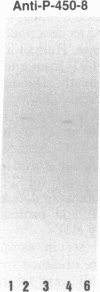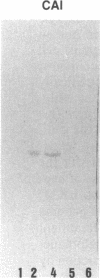Abstract
"Anti-liver/kidney microsome" (anti-LKM) autoantibodies have been found in the serum of patients with cryptogenic chronic hepatitis and with immunoallergic drug-induced hepatitis, such as those induced by halothane or by tienilic acid (called anti-LKM2 in this case). So far the nature of the human microsomal macromolecules recognized by these antibodies has not been determined. Here we show, by using immunoblot techniques, that among the macromolecules present in human adult liver microsomes, one protein called cytochrome P-450-8 is specifically recognized by most sera of patients containing anti-LKM2 antibodies but not by control serum. Human fetal liver microsomes that do not contain cytochrome P-450-8 are not recognized by the anti-LKM2 antibodies. It is also shown that anti-cytochrome P-450-8 antibodies as well as human serum containing anti-LKM2 antibodies specifically inhibit the hydroxylation of tienilic acid by human liver microsomes. These results indicate that anti-LKM2 antibodies appearing in patients with hepatitis and concomitant administration of tienilic acid are directed against a cytochrome P-450 isoenzyme that catalyzes the metabolic oxidation of this drug. This suggests a possible mechanism for the appearance of anti-organelle antibodies in a drug-induced hepatitis.
Full text
PDF
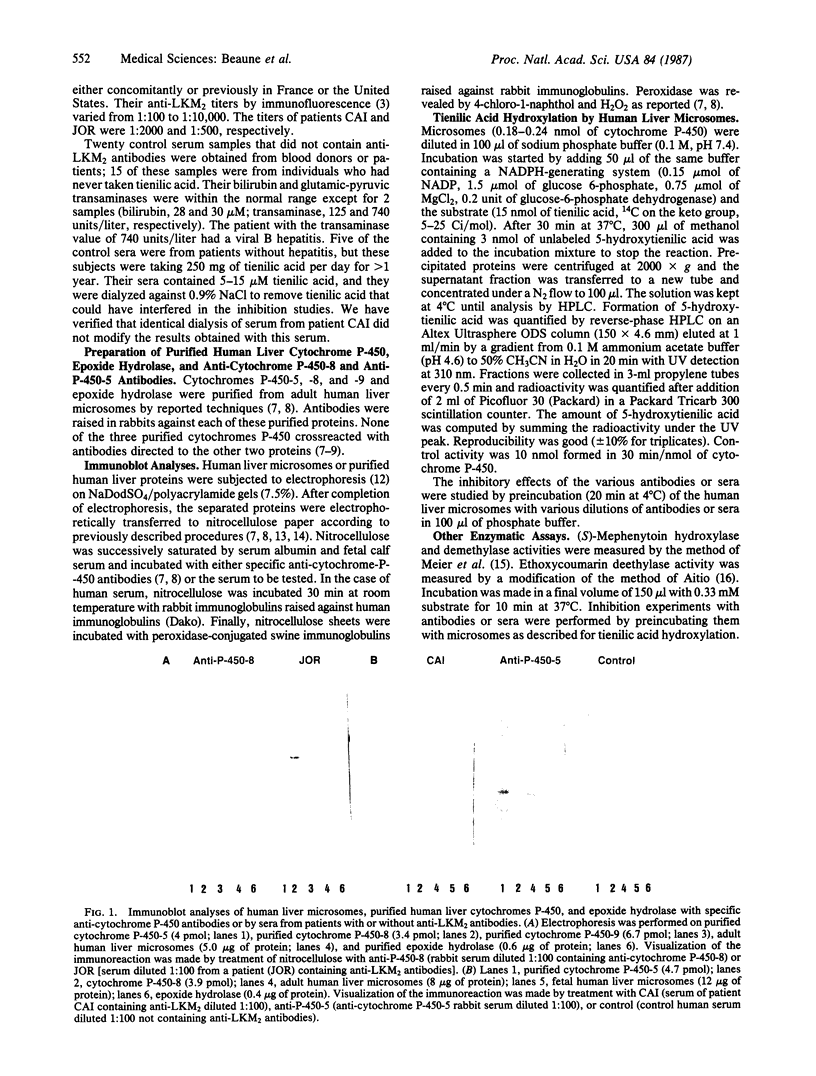
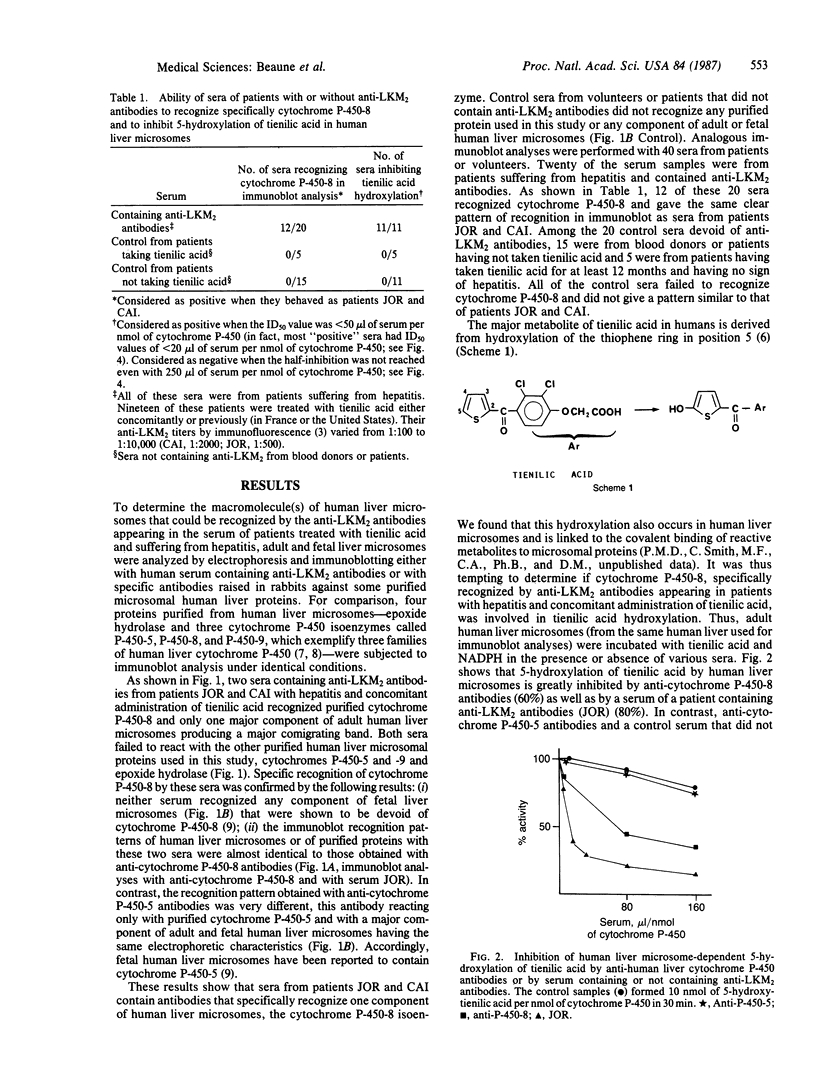
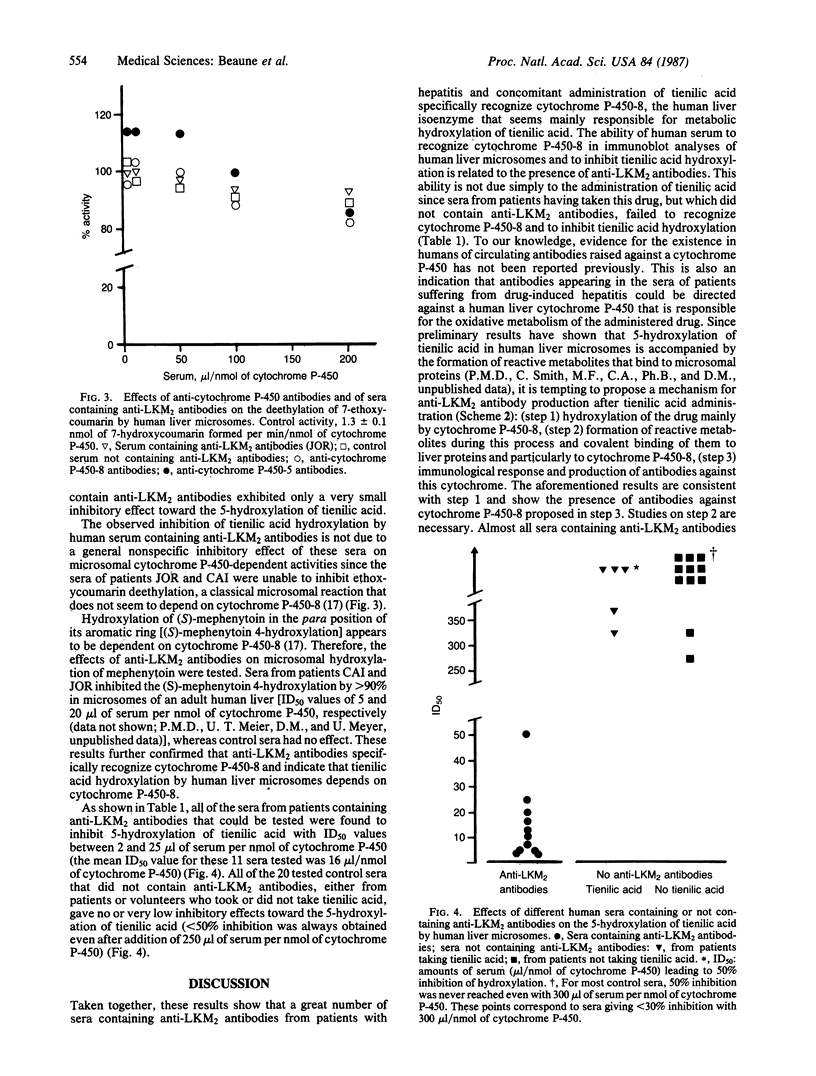
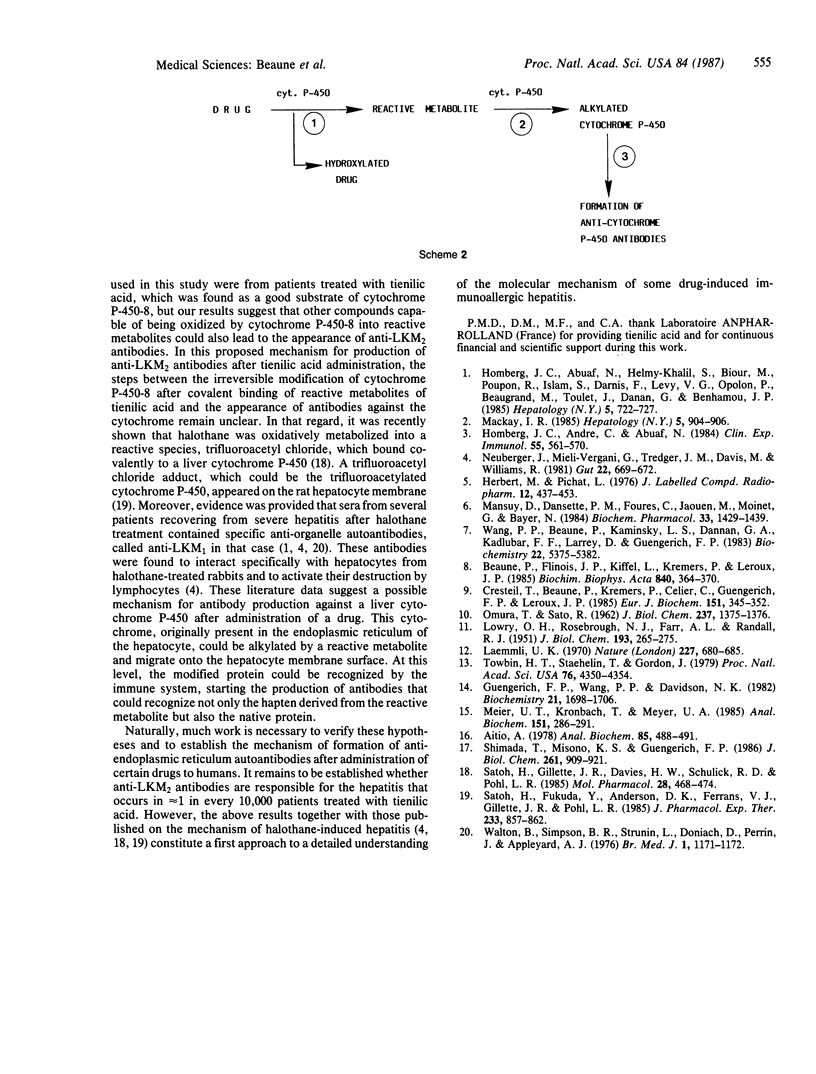
Images in this article
Selected References
These references are in PubMed. This may not be the complete list of references from this article.
- Aitio A. A simple and sensitive assay of 7-ethoxycoumarin deethylation. Anal Biochem. 1978 Apr;85(2):488–491. doi: 10.1016/0003-2697(78)90245-2. [DOI] [PubMed] [Google Scholar]
- Beaune P., Flinois J. P., Kiffel L., Kremers P., Leroux J. P. Purification of a new cytochrome P-450 from human liver microsomes. Biochim Biophys Acta. 1985 Jul 5;840(3):364–370. doi: 10.1016/0304-4165(85)90216-8. [DOI] [PubMed] [Google Scholar]
- Cresteil T., Beaune P., Kremers P., Celier C., Guengerich F. P., Leroux J. P. Immunoquantification of epoxide hydrolase and cytochrome P-450 isozymes in fetal and adult human liver microsomes. Eur J Biochem. 1985 Sep 2;151(2):345–350. doi: 10.1111/j.1432-1033.1985.tb09107.x. [DOI] [PubMed] [Google Scholar]
- Guengerich F. P., Wang P., Davidson N. K. Estimation of isozymes of microsomal cytochrome P-450 in rats, rabbits, and humans using immunochemical staining coupled with sodium dodecyl sulfate-polyacrylamide gel electrophoresis. Biochemistry. 1982 Mar 30;21(7):1698–1706. doi: 10.1021/bi00536a035. [DOI] [PubMed] [Google Scholar]
- Homberg J. C., Abuaf N., Helmy-Khalil S., Biour M., Poupon R., Islam S., Darnis F., Levy V. G., Opolon P., Beaugrand M. Drug-induced hepatitis associated with anticytoplasmic organelle autoantibodies. Hepatology. 1985 Sep-Oct;5(5):722–727. doi: 10.1002/hep.1840050504. [DOI] [PubMed] [Google Scholar]
- Homberg J. C., Andre C., Abuaf N. A new anti-liver-kidney microsome antibody (anti-LKM2) in tienilic acid-induced hepatitis. Clin Exp Immunol. 1984 Mar;55(3):561–570. [PMC free article] [PubMed] [Google Scholar]
- LOWRY O. H., ROSEBROUGH N. J., FARR A. L., RANDALL R. J. Protein measurement with the Folin phenol reagent. J Biol Chem. 1951 Nov;193(1):265–275. [PubMed] [Google Scholar]
- Laemmli U. K. Cleavage of structural proteins during the assembly of the head of bacteriophage T4. Nature. 1970 Aug 15;227(5259):680–685. doi: 10.1038/227680a0. [DOI] [PubMed] [Google Scholar]
- Mackay I. R. Induction by drugs of hepatitis and autoantibodies to cell organelles: significance and interpretation. Hepatology. 1985 Sep-Oct;5(5):904–906. doi: 10.1002/hep.1840050534. [DOI] [PubMed] [Google Scholar]
- Mansuy D., Dansette P. M., Foures C., Jaouen M., Moinet G., Bayer N. Metabolic hydroxylation of the thiophene ring: isolation of 5-hydroxy-tienilic acid as the major urinary metabolite of tienilic acid in man and rat. Biochem Pharmacol. 1984 May 1;33(9):1429–1435. doi: 10.1016/0006-2952(84)90409-x. [DOI] [PubMed] [Google Scholar]
- Meier U. T., Kronbach T., Meyer U. A. Assay of mephenytoin metabolism in human liver microsomes by high-performance liquid chromatography. Anal Biochem. 1985 Dec;151(2):286–291. doi: 10.1016/0003-2697(85)90177-0. [DOI] [PubMed] [Google Scholar]
- Neuberger J., Mieli-Vergani G., Tredger J. M., Davis M., Williams R. Oxidative metabolism of halothane in the production of altered hepatocyte membrane antigens in acute halothane-induced hepatic necrosis. Gut. 1981 Aug;22(8):669–672. doi: 10.1136/gut.22.8.669. [DOI] [PMC free article] [PubMed] [Google Scholar]
- OMURA T., SATO R. A new cytochrome in liver microsomes. J Biol Chem. 1962 Apr;237:1375–1376. [PubMed] [Google Scholar]
- Satoh H., Fukuda Y., Anderson D. K., Ferrans V. J., Gillette J. R., Pohl L. R. Immunological studies on the mechanism of halothane-induced hepatotoxicity: immunohistochemical evidence of trifluoroacetylated hepatocytes. J Pharmacol Exp Ther. 1985 Jun;233(3):857–862. [PubMed] [Google Scholar]
- Satoh H., Gillette J. R., Davies H. W., Schulick R. D., Pohl L. R. Immunochemical evidence of trifluoroacetylated cytochrome P-450 in the liver of halothane-treated rats. Mol Pharmacol. 1985 Nov;28(5):468–474. [PubMed] [Google Scholar]
- Shimada T., Misono K. S., Guengerich F. P. Human liver microsomal cytochrome P-450 mephenytoin 4-hydroxylase, a prototype of genetic polymorphism in oxidative drug metabolism. Purification and characterization of two similar forms involved in the reaction. J Biol Chem. 1986 Jan 15;261(2):909–921. [PubMed] [Google Scholar]
- Towbin H., Staehelin T., Gordon J. Electrophoretic transfer of proteins from polyacrylamide gels to nitrocellulose sheets: procedure and some applications. Proc Natl Acad Sci U S A. 1979 Sep;76(9):4350–4354. doi: 10.1073/pnas.76.9.4350. [DOI] [PMC free article] [PubMed] [Google Scholar]
- Walton B., Simpson B. R., Strunin L., Doniach D., Perrin J., Appleyard A. J. Unexplained hepatitis following halothane. Br Med J. 1976 May 15;1(6019):1171–1176. doi: 10.1136/bmj.1.6019.1171. [DOI] [PMC free article] [PubMed] [Google Scholar]
- Wang P. P., Beaune P., Kaminsky L. S., Dannan G. A., Kadlubar F. F., Larrey D., Guengerich F. P. Purification and characterization of six cytochrome P-450 isozymes from human liver microsomes. Biochemistry. 1983 Nov 8;22(23):5375–5383. doi: 10.1021/bi00292a019. [DOI] [PubMed] [Google Scholar]




